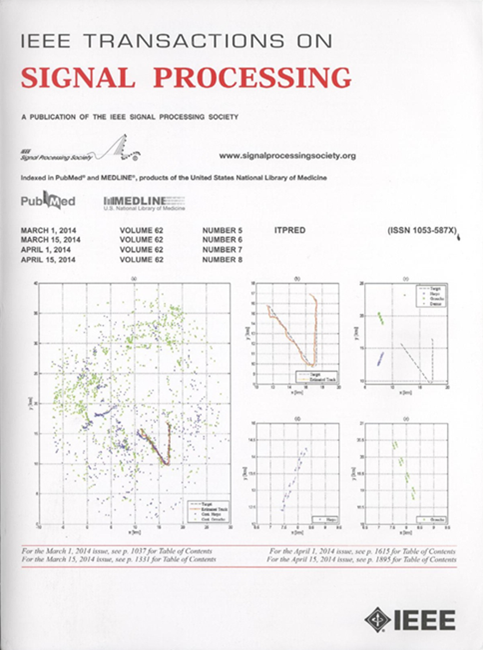面向扩展目标跟踪与分类的宽带传感器资源分配
IF 4.6
2区 工程技术
Q1 ENGINEERING, ELECTRICAL & ELECTRONIC
引用次数: 0
摘要
通信基站通过传输宽带信号,可以在通信传感一体化的背景下实现对多个扩展目标的高精度跟踪和准确分类。然而,基站的时间资源往往是有限的。在时分操作模式下,为了保证通信性能,必须预留一部分时间资源,同时为了获得更好的多目标感知性能,必须合理分配剩余的时间资源。为了解决这个问题,我们开发了一种面向传感任务的宽带传感器资源分配(RA)方案。首先推导了扩展目标位置和形状参数估计误差的cram本文章由计算机程序翻译,如有差异,请以英文原文为准。
Wideband Sensor Resource Allocation for Extended Target Tracking and Classification
Communication base stations can achieve high-precision tracking and accurate classification for multiple extended targets in the context of integrated communication and sensing by transmitting wideband signal. However, the time resources of the base stations are often limited. In the time-division operation mode, part of the time resources must be reserved to guarantee communication performance, while the rest of the resources must be properly allocated for better multi-target sensing performance. To deal with this, we develop a sensing task-oriented resource allocation (RA) scheme for wideband sensors. We first derive the Cramér–Rao lower bound for the estimation errors of position and shape parameters of the extended targets, and analyze their inside relations w.r.t. the resource vectors. Based on this, we construct the evaluation metric of tracking and classification performance, and subsequently build a non-smooth mathematical resource optimization model to maximize the target capacity within predetermined tracking and classification requirements. To solve this RA model, we then design an efficient two-step solution technique that incorporates dual transformation and discrete search. Finally, simulation results demonstrate that the proposed RA scheme can greatly increase the number of the well sensed targets within a limited sensing resource budget.
求助全文
通过发布文献求助,成功后即可免费获取论文全文。
去求助
来源期刊

IEEE Transactions on Signal Processing
工程技术-工程:电子与电气
CiteScore
11.20
自引率
9.30%
发文量
310
审稿时长
3.0 months
期刊介绍:
The IEEE Transactions on Signal Processing covers novel theory, algorithms, performance analyses and applications of techniques for the processing, understanding, learning, retrieval, mining, and extraction of information from signals. The term “signal” includes, among others, audio, video, speech, image, communication, geophysical, sonar, radar, medical and musical signals. Examples of topics of interest include, but are not limited to, information processing and the theory and application of filtering, coding, transmitting, estimating, detecting, analyzing, recognizing, synthesizing, recording, and reproducing signals.
 求助内容:
求助内容: 应助结果提醒方式:
应助结果提醒方式:


